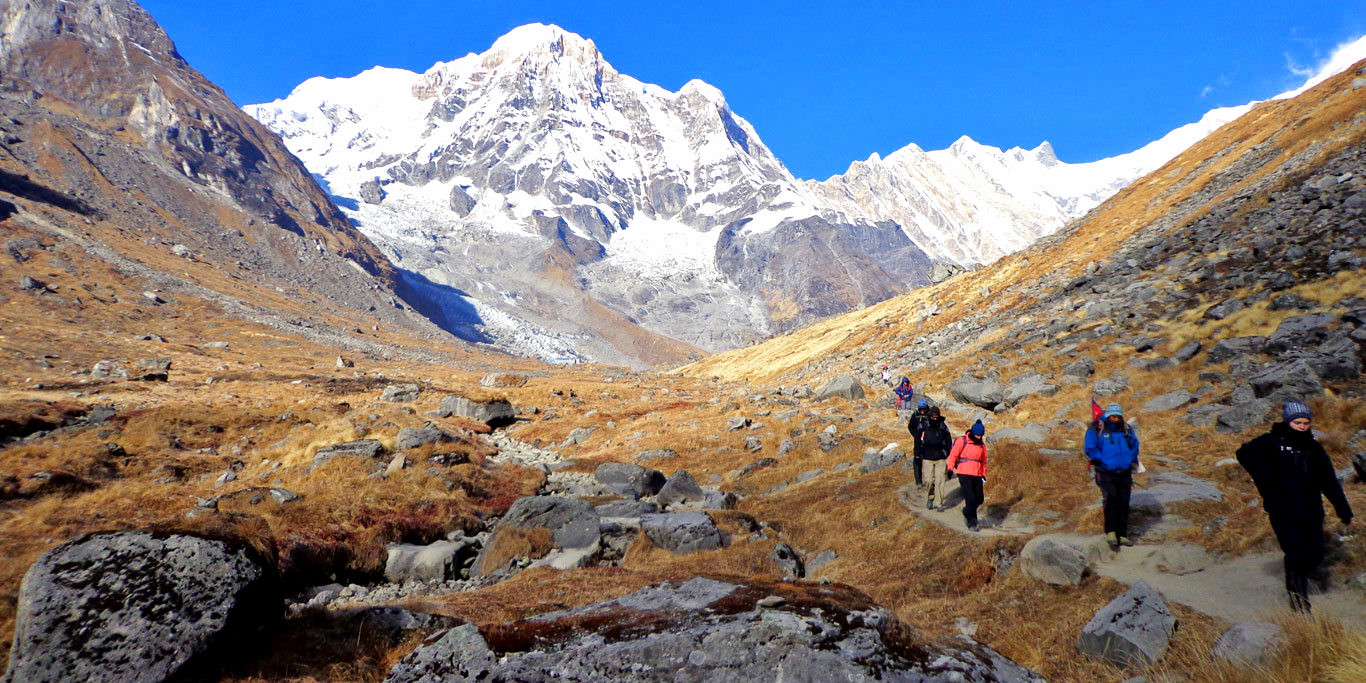Everest Three Passes Trek
The Everest Three Passes Trek is considered one of the most exhilarating and comprehensive treks in the Everest region of Nepal, appealing to those who wish to explore more than just the base camp. This challenging circuit covers not only the iconic Everest Base Camp but also three of the high mountain passes, providing a full experience of the breathtaking beauty and formidable terrain of the Himalayas.
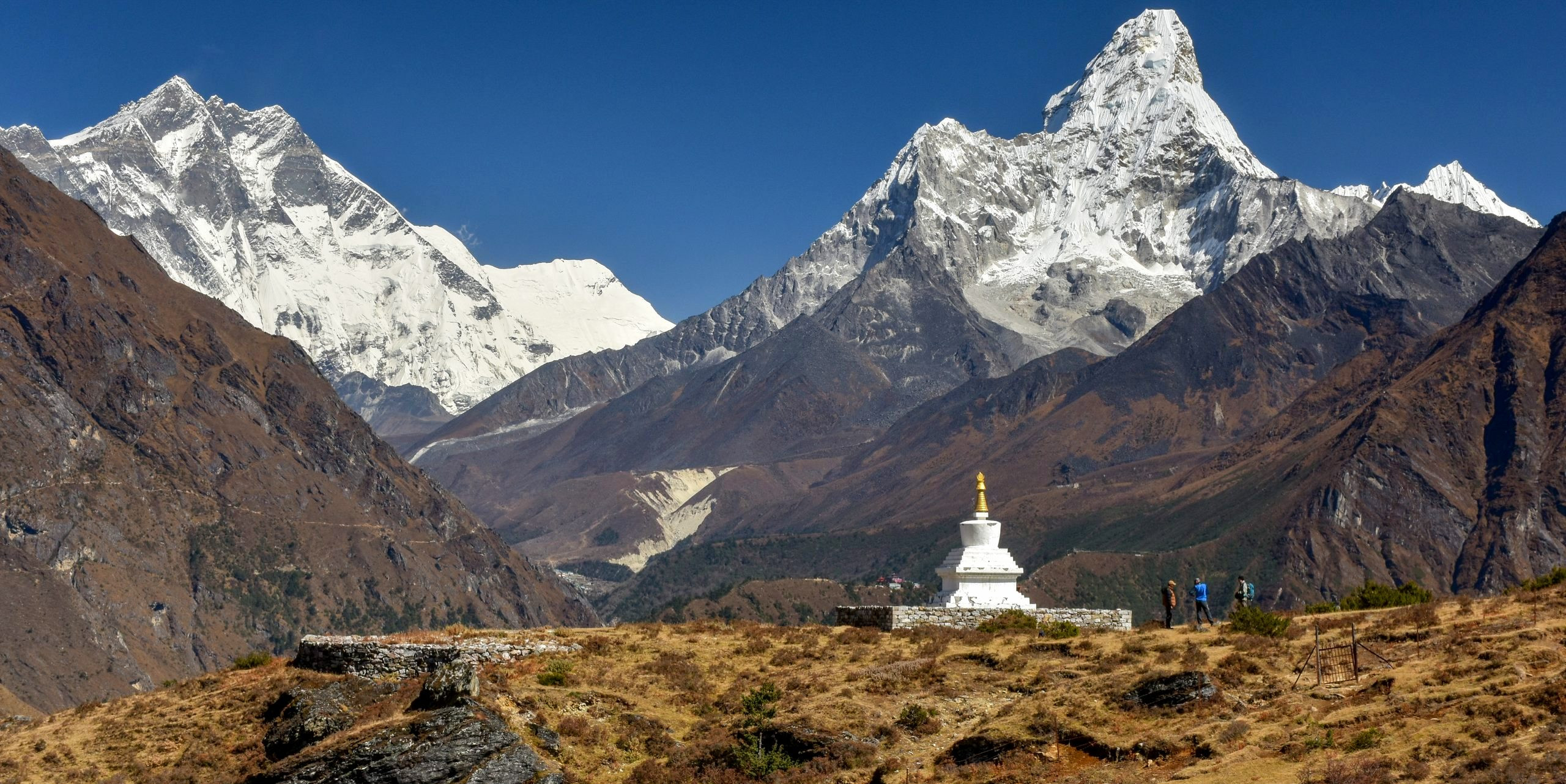
Key Features of the Everest Three Passes Trek:
Three High Mountain Passes
-
Kongma La Pass (5,535 meters): The highest of the three, offering stunning views of lakes and the surrounding peaks.
-
Cho La Pass (5,420 meters): Known for its dramatic views and the challenge of crossing a glacier.
-
Renjo La Pass (5,360 meters): Offers one of the most spectacular views of the Everest range.
Everest Base Camp and Kala Patthar: The trek includes visits to Everest Base Camp (5,364 meters) and Kala Patthar (5,545 meters), which provides a classic view of Mount Everest and surrounding mountains.
Scenic Beauty and Diverse Landscapes: Trekkers traverse varied landscapes, from lush valleys to barren glacial moraines, with incredible views of some of the world’s highest peaks, including Everest, Lhotse, Makalu, and Cho Oyu.
Sherpa Culture and Villages: The route goes through vibrant Sherpa villages like Namche Bazaar, Tengboche, and Dingboche, allowing trekkers to experience the rich culture of the Sherpas. Tengboche Monastery, the largest in the Khumbu region, is a spiritual highlight.
Wildlife and Flora: The Sagarmatha National Park, through which much of the trek passes, is home to unique flora and fauna, including the chance to see musk deer, snow leopards, and Himalayan monals.
The Everest Three Passes Trek is ideal for those looking for a challenging trek that goes beyond the typical routes, offering extensive views, cultural depth, and a thrilling adventure in the Himalayas. With the right preparation and respect for the altitude and elements, this trek can be a profoundly rewarding experience.
Manaslu Circuit Trek
The Manaslu Circuit Trek is an exceptional journey around the world's eighth highest mountain, Manaslu, which stands at a towering 8,163 meters. Located in a remote part of Nepal, this trek is favored by those looking for a less commercialized route than the more frequented trails to Everest Base Camp and Annapurna Circuit. It combines challenging trekking with spectacular views of Manaslu and adjoining peaks, along with a rich cultural experience.
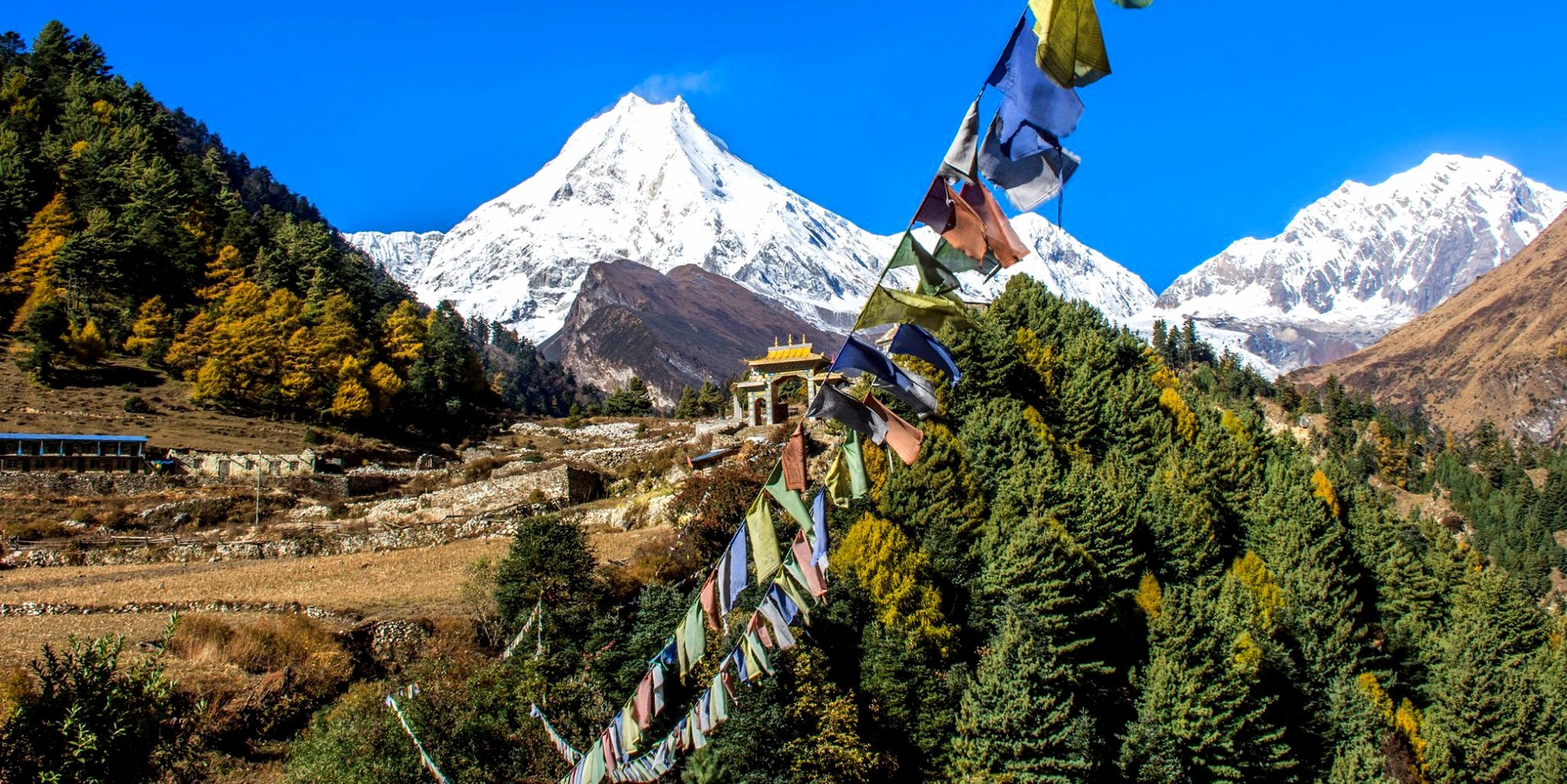
Key Features of the Manaslu Circuit Trek
-
Challenging Terrain: The trek involves navigating through diverse terrains, from lush lowlands to the arid, high-altitude Larkya La Pass, which is one of the trek's highest points at 5,106 meters.
-
Rich Cultural Experience:The circuit passes through various ethnic communities, including Nubri and Tsum, where ancient Buddhist traditions and customs are still alive. The trail is dotted with monasteries, mani walls, and chortens, reflecting the deep-rooted Buddhism in the region.
-
Stunning Natural Beauty: Trekkers are treated to views of Manaslu, along with other Himalayan giants like Himalchuli, Ngadi Chuli, and Ganesh Himal. The trail also passes through the beautiful Manaslu Conservation Area, which is home to diverse flora and fauna.
-
Remote and Less Crowded: The Manaslu Circuit remains relatively isolated compared to Nepal’s other popular treks, offering a more peaceful and solitary trekking experience.
Challenges
-
Permits: Unlike more popular treks in Nepal, the Manaslu Circuit requires a special restricted area permit, making it necessary to trek with a registered guide and at least one other trekker.
-
Physical Demand: The trek is physically demanding with long trekking days and steep climbs, particularly as one approaches the Larkya La Pass.
-
Altitude Sickness: The high altitude, particularly around Larkya La, poses a risk of altitude sickness. Proper acclimatization days are integrated into the itinerary to help mitigate this risk.
The Manaslu Circuit Trek is a profoundly rewarding experience for those who undertake it. It not only challenges trekkers physically but also engages them with its breathtaking landscapes and rich cultural tapestry. This trek is perfect for adventurers who desire a journey that combines natural beauty with cultural immersion in one of the less-trodden paths of the Himalayas.
Annapurna Circuit Trek
The Annapurna Circuit Trek is one of the most popular and diverse treks in Nepal, known for its stunning variety of landscapes ranging from subtropical forests and paddy fields to high-altitude plateaus that offer mesmerizing views of the Annapurna range. This trek encircles the Annapurna massif, providing trekkers with an extraordinary opportunity to experience the richness of the geography, culture, and biodiversity of the region.
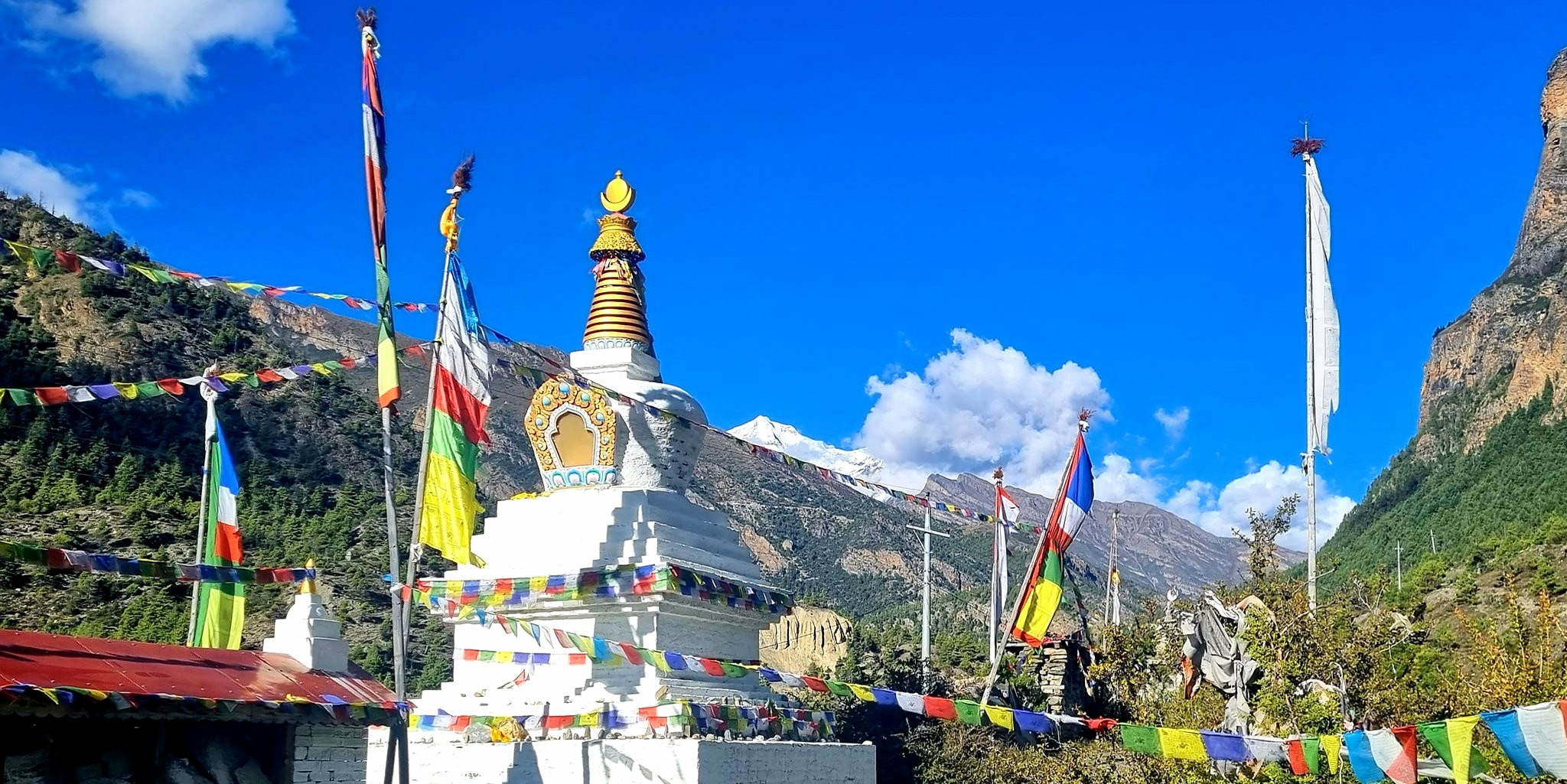
Key Features of the Annapurna Circuit Trek:
-
Diverse Ecosystems and Landscapes: The trek transitions from lush greenery in the Marshyangdi River valley to the arid, desert-like terrain of the Upper Mustang and Manang districts, culminating in the high-altitude Thorong La Pass at 5,416 meters.
-
Cultural Diversity: Trekkers traverse a variety of cultural areas, from Hindu villages at the lower foothills to Tibetan-style Buddhist villages in the Manang district. This cultural journey is complemented by encounters with different ethnic groups such as Gurung, Manangi, and Thakali.
-
Thorong La Pass: Crossing the Thorong La Pass, one of the highest trekking passes in the world, is a highlight and a significant challenge of the trek. It provides exhilarating, panoramic views of the Annapurna massif, Dhaulagiri, and surrounding peaks.
-
Pilgrimage Sites: The trek routes near the sacred site of Muktinath, an important pilgrimage site for both Hindus and Buddhists, adding a spiritual element to the journey.
-
Hot Springs: After descending from Thorong La, trekkers can relax in the natural hot springs at Tatopani, a welcome respite for sore muscles.
Challenges
-
Altitude Sickness: Given the high altitudes, particularly around Thorong La, trekkers need to be cautious of altitude sickness.
-
Physical Demands: The Annapurna Circuit is physically demanding, with several long trekking days and steep ascents and descents.
-
Weather Conditions: Weather can be unpredictable, especially at higher altitudes, which can affect crossing Thorong La.
The Annapurna Circuit Trek appeals to those who wish to immerse themselves in the natural beauty and cultural richness of Nepal while challenging their physical limits. The trek is not just a journey through diverse landscapes but also a deep dive into the heart of Nepalese culture and community life. Whether you are a seasoned trekker or a relative newcomer to trekking, the Annapurna Circuit offers a fulfilling and enriching high-altitude adventure.
Dhaulagiri Circuit Trek
The Dhaulagiri Circuit Trek is one of the most challenging and less frequented treks in Nepal, circling the high and mighty Dhaulagiri massif, which is the world's seventh-highest peak, standing at 8,167 meters. This trek offers an adventurous route that includes glacier crossings, snowy passes, and stunning views of towering peaks. It is perfect for experienced trekkers seeking solitude, dramatic landscapes, and a taste of extreme high-altitude trekking.
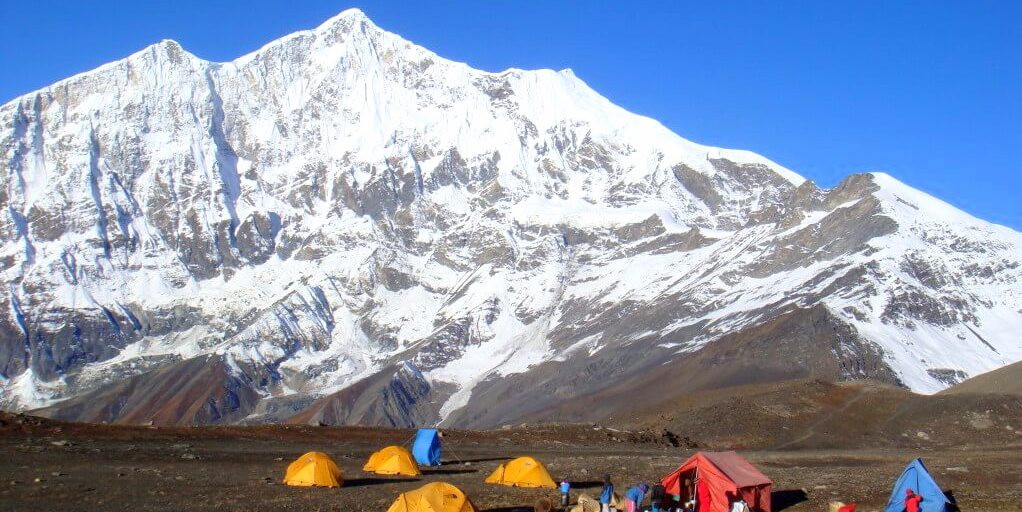
Key Features of the Dhaulagiri Circuit Trek
-
Remote and Rugged Terrain: The trek traverses some of the most challenging terrains in the Nepalese Himalayas, including the moraines of Dhaulagiri Glacier and the icy slopes of the French Pass (5,360 meters) and Dhampus Pass (5,244 meters).
-
Spectacular Mountain Views: Offers up-close views of Dhaulagiri, the Annapurna Range, and numerous other peaks over 7,000 meters. The panorama from various points along the trek is breathtaking and offers a stark contrast to the lush lower valleys.
-
Hidden Trails and Untouched Nature: As one of the less trodden paths in Nepal, the Dhaulagiri Circuit provides a sense of exploration and adventure. The area is known for its pristine beauty and offers a chance to trek in quiet and unspoiled settings.
-
High Altitude Challenge: The trek includes several high-altitude challenges, notably the crossing of two high passes, which are among the most thrilling aspects of the trek. These passes demand good physical condition and acclimatization.
-
Diverse Flora and Fauna: The route passes through the Dhaulagiri Conservation Area, home to a variety of wildlife, including snow leopards and blue sheep, as well as a diverse range of bird species.
Challenges
-
Extreme Conditions: The trek involves traversing rugged glacial terrains, high-altitude passes, and remote mountainous areas that can experience sudden weather changes.
-
Physical Demands: It is physically demanding and requires excellent fitness, as well as experience in high-altitude trekking.
-
Technical Sections: Some parts of the trek, especially near the passes, may require the use of ice axes and crampons, making it suitable for those with some mountaineering experience.
The Dhaulagiri Circuit Trek is for the adventurous soul who is not just looking to trek but to embark on a profound journey through some of the wildest and most awe-inspiring landscapes on the planet. It offers a perfect mix of high-altitude challenges, stunning natural beauty, and the thrill of navigating through remote areas. This trek is a test of endurance, will, and the spirit of adventure, providing an unforgettable experience for those who dare to undertake it.
Kanchenjunga Base Camp Trek
The Kanchenjunga Base Camp Trek is a remarkable journey to the base of the world's third-highest mountain, Kanchenjunga, which stands majestically at 8,586 meters. This trek is one of the most remote and challenging adventures in Nepal, offering an authentic experience far from the more trafficked trails of Everest and Annapurna. It is a journey through pristine wilderness areas and culturally rich villages, providing trekkers with an immersive experience in both natural beauty and traditional lifestyles.
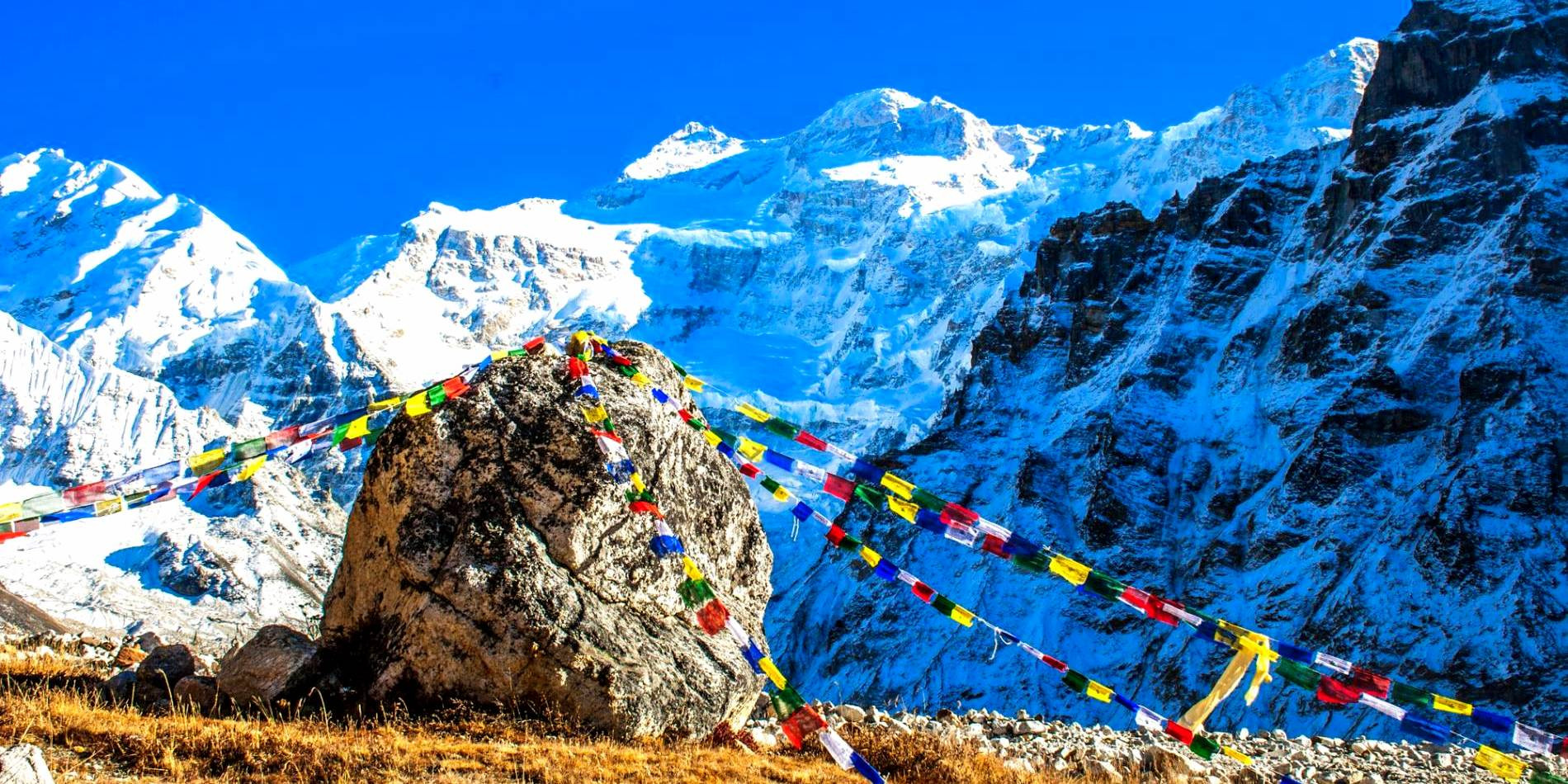
Key Features of the Kanchenjunga Base Camp Trek
-
Remote and Pristine Environment: The trek traverses through the Kanchenjunga Conservation Area, which is known for its rich biodiversity. This region is less developed and less frequented by tourists, offering a true wilderness experience.
-
Spectacular Mountain Views: Unparalleled views of the massive Kanchenjunga, along with a range of other Himalayan giants such as Jannu and Makalu. The trek offers some of the most dramatic scenery in the Himalayas.
-
Cultural Richness: The route passes through diverse ethnic settlements, including Rai and Limbu villages, offering insights into the unique customs, traditions, and lifestyles of the local inhabitants.
-
High Altitude Challenges: This trek involves navigating through challenging high-altitude terrain, including passes over 4,000 meters, which requires good physical fitness and proper acclimatization.
-
Diverse Flora and Fauna: Trekkers can observe a variety of flora and fauna, including rhododendron forests, orchids, and the possibility of sighting rare animals like the snow leopard and red panda.
Challenges
-
Logistics and Accessibility: Due to its remote location, reaching the start of the trek and the logistics involved can be more complicated than other popular treks in Nepal.
-
Physical Demands: The trek is long and physically demanding, requiring a high level of stamina and endurance.
-
Altitude Sickness: The high altitudes encountered on this trek pose a risk for altitude sickness, emphasizing the need for careful acclimatization.
The Kanchenjunga Base Camp Trek is ideal for those looking to venture into one of the less explored areas of the Himalayas. It challenges trekkers not only physically but also offers a profound connection to the natural world and the cultures within it. This trek is perfect for adventurers who are passionate about exploring off-the-beaten-path destinations and experiencing a side of Nepal that few get to see.
Tips for The Most Challenging Treks in Nepal
Trekking some of the most challenging trails in Nepal can be a rewarding experience, offering stunning natural beauty and deep cultural immersion. However, these treks demand thorough preparation and awareness to ensure safety and enjoyment. Here are some essential tips for tackling the most challenging treks in Nepal:
Proper Preparation and Training
-
Start physical training several months in advance to build stamina and strength. Focus on cardiovascular exercises, strength training, and long-distance hiking.
-
Practice hiking with a loaded backpack to simulate the conditions you will face on the trek.
Acclimatization and Altitude Sickness
-
Take acclimatization seriously to avoid altitude sickness. Plan your itinerary to include days specifically for acclimatization.
-
Learn the symptoms of altitude sickness and know when to descend or seek medical advice.
Hire Experienced Guides and Porters
-
Especially for remote and challenging treks like the Kanchenjunga Base Camp or the Dhaulagiri Circuit, having an experienced guide and porter can enhance your safety and experience.
-
Guides are invaluable for their knowledge of the terrain, weather conditions, and local culture.
Appropriate Gear and Clothing
-
Invest in high-quality trekking gear, including a sturdy pair of hiking boots, a comfortable backpack, and a warm sleeping bag.
-
Dress in layers to manage varying temperatures, and always carry waterproof and windproof clothing.
Navigation Tools
- Carry detailed maps, a compass, or a GPS device. While guides are crucial, having your own navigation tools adds an extra layer of safety.
Food and Water
-
Ensure you have access to clean water by carrying water purification tablets or a water filter.
-
Pack high-energy snacks like nuts, dried fruits, and energy bars, and learn about the available food options on your chosen trek.
Travel Insurance
- Purchase comprehensive travel insurance that covers high-altitude trekking and emergency evacuation, which is crucial for remote treks.
Respect Local Culture and Environment
-
Learn about and respect the local customs and traditions. Always ask for permission before taking photos of local people or sacred sites.
-
Practice Leave No Trace principles to minimize your impact on the environment.
Stay Informed About the Weather
- Keep updated on the weather forecasts for the areas you will be trekking through and be prepared to adjust your plans accordingly.
Mental Preparation
- Prepare mentally for the challenges ahead. Trekking in high altitudes can be as much a mental challenge as a physical one.
By following these tips, you can enhance your readiness and enjoyment for the most challenging treks in Nepal, turning them into memorable and transformative experiences.
Health and Safety for The Most Challenging Treks in Nepal
Health and safety are paramount when undertaking any of the challenging treks in Nepal. The remote nature of these treks, combined with the high altitudes and physically demanding conditions, requires careful planning and consideration to ensure a safe and successful experience. Here are key health and safety guidelines to follow:
Health Considerations
Altitude Sickness
-
Acclimatization: Take ample time to acclimatize to high altitudes. Include acclimatization days in your itinerary.
-
Recognition and Response: Know the symptoms of altitude sickness, which can include headache, nausea, dizziness, and fatigue. If symptoms occur, stop ascending immediately. If symptoms worsen, descend to a lower altitude.
Physical Fitness
- Prepare months in advance with cardiovascular exercises, strength training, and hiking. Being in good physical shape will reduce the risk of injury and fatigue.
Hydration and Nutrition
Medical Kit
-
Carry a comprehensive first-aid kit equipped with treatments for minor injuries, blister care, and basic medications for common ailments like headaches and stomach issues.
-
Include altitude sickness medication as prescribed by a healthcare provider.
Safety Tips
Communication Devices
- Carry a satellite phone or a two-way radio for communication in areas without mobile coverage, which is common on remote treks.
Weather Awareness
- Stay informed about the weather conditions. Weather in the Himalayas can change rapidly, and being prepared for all conditions is crucial.
Insurance
- Ensure you have adequate travel insurance that covers high-altitude trekking and emergency medical evacuation.
Respect Local Guidelines and Regulations
- Follow the trekking regulations set by local conservation areas and national parks. Adhere to the guidelines provided by your guides.
Environmental Considerations
- Follow the principles of Leave No Trace. Dispose of waste properly, minimize campfire impacts, and respect wildlife and plants.
Cultural Sensitivity
- Show respect for local customs and traditions. Dress modestly, ask permission before taking photographs, and support local businesses.
Emergency Preparedness
- Know the basic emergency procedures for your trek. Discuss with your guide the closest medical facilities and the steps to take in case of an emergency.
Evacuation Plan
- Have a clear evacuation plan in place. Know the locations of the nearest rescue posts, and how to initiate a rescue operation if necessary.
By addressing these health and safety considerations, trekkers can significantly mitigate risks associated with high-altitude, long-duration hiking in some of the world’s most rugged terrains. Planning thoroughly and respecting both natural and cultural environments will not only ensure your safety but also enhance your trekking experience in Nepal.
Ideal Time for The Most Challenging Treks in Nepal
Choosing the right time to embark on one of Nepal's challenging treks is crucial for a successful and enjoyable experience. The ideal time largely depends on the specific trek and its location within the Himalayas, but generally, the best trekking seasons in Nepal are pre-monsoon (spring) and post-monsoon (autumn). Here’s a breakdown of the ideal times for the most challenging treks:
Pre-Monsoon (Spring: March to May)
-
Weather: During these months, the weather is generally stable with warmer days and cooler nights. The skies are clearer as the season progresses, which is ideal for mountain views.
-
Advantages: Spring is a vibrant time in Nepal as rhododendrons and other flowers bloom, adding spectacular colors to the trekking routes. This is also a great time for wildlife spotting.
-
Popular Treks: This season is ideal for most treks, including the Everest Three Passes Trek, Annapurna Circuit Trek, and Manaslu Circuit Trek.
Post-Monsoon (Autumn: September to November)
-
Weather: Autumn is considered the best trekking season in Nepal due to stable weather conditions and moderate temperatures. The monsoon rains from June to August clear the dust in the air, resulting in crystal-clear skies.
-
Advantages: The clear skies offer spectacular mountain views. The trails are generally busier during this season, but the social atmosphere and excellent weather conditions make up for the crowd.
-
Popular Treks: All major treks, including the Dhaulagiri Circuit Trek and Kanchenjunga Base Camp Trek, are highly recommended during this period.
Off-Peak Seasons
-
Winter (December to February): Winter can be a challenging time to trek due to heavy snowfall and extremely cold temperatures, especially at high altitudes. However, for the adventurous soul, treks like the Everest Base Camp can still be accessible, albeit with proper winter gear and precautions.
-
Monsoon (June to August): Monsoon season is generally avoided due to slippery trails, leeches, and obscured mountain views. However, regions like Upper Mustang and Dolpo, which lie in the rain shadow area, remain viable options as they receive significantly less rainfall.
Special Considerations
-
Altitude and Acclimatization: Regardless of the season, altitude sickness is a concern for high-altitude treks. It’s important to choose a time that allows for gradual acclimatization.
-
Crowds: If you prefer solitude, planning your trek at the beginning or end of the peak seasons can help avoid the largest crowds.
By choosing the appropriate time for your trek in Nepal, not only can you enjoy more favorable weather conditions, but you also enhance your overall trekking experience with better views and safer trails.
Nepal's challenging treks offers an unforgettable adventure that tests your limits and rewards you with breathtaking views and cultural richness. Whether you choose the Everest Three Passes, Manaslu Circuit, Annapurna Circuit, Dhaulagiri Circuit, or Kanchenjunga Base Camp, each trek presents unique challenges and opportunities for personal growth. Proper preparation, respect for local cultures, and readiness for physical and mental demands are key to making the most of these adventures. Nepal's high-altitude treks are not just journeys through stunning landscapes but transformative experiences that leave lasting impressions. Ready to explore the heights and depths of your spirit in the heart of the Himalayas.
FAQs for The Most Challenging Treks in Nepal
Q: What are the most challenging treks in Nepal?
A: The most challenging treks in Nepal involve routes with high mountain passes, remote regions, and diverse terrains, requiring a high level of physical fitness and trekking experience.
Q: What is the best time to undertake these challenging treks?
A: The best time for these treks is during the spring (March to May) and autumn (September to November) when the weather is stable and the skies are clear.
Q: Do I need prior trekking experience for these treks?
A: Yes, prior trekking experience and good physical fitness are recommended due to the demanding nature of the terrain and altitude.
Q: What kind of gear is required?
A: Essential gear includes sturdy trekking boots, warm clothing (layering system), a good quality sleeping bag, trekking poles, a first aid kit, water purification system, and weather-appropriate gear.
Q: How do I acclimatize to the high altitudes?
A: Acclimatization involves a gradual ascent, taking rest days, staying hydrated, and avoiding alcohol. Recognizing and responding to symptoms of altitude sickness is crucial.
Q: Are permits required for these treks?
A: Yes, most treks require permits such as TIMS (Trekkers' Information Management System) cards, conservation area permits, and special permits for restricted areas.
Q: What are the accommodation options on these treks?
A: Accommodation typically includes teahouses and lodges. In remote areas, camping may be necessary, and facilities can be basic.
Q: What safety measures should I consider?
A: Key safety measures include having travel insurance that covers high-altitude trekking and emergency evacuation, carrying a first aid kit, and ensuring reliable communication.
Q: Can I trek solo, or do I need a guide?
A: While solo trekking is possible for experienced trekkers, hiring a guide is recommended for safety, navigation, and cultural insights. Some areas require a registered guide or agency.
Q: How do I prepare physically for these treks?
A: Physical preparation should include cardiovascular training, strength training, and long hikes with a loaded backpack to build the necessary stamina and strength.
For the Nepal tour, please click here.
If you are looking for different kinds of Nepal Tours or Trekking Packages, feel free to contact us.
